- August 16, 2023
How padams and javalis are finding their way back into the Carnatic concert repertoire
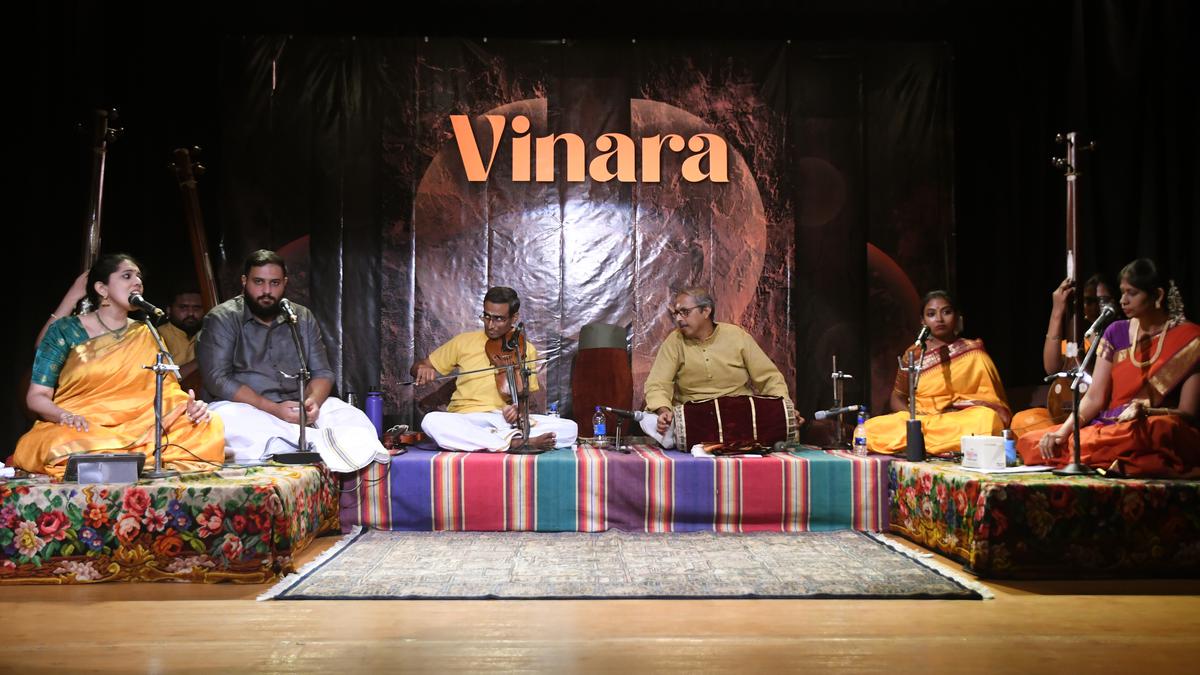
In the early 19th century, several attempts were made to recast the classical music tradition of South India. Constructing a classical music repertoire acceptable to the social and cultural milieu of those times required the positioning of certain compositional forms as core elements and relegating others to a lesser status in the artistic hierarchy. Padams and Javalis were the greatest casualties in this exercise. Thanks to the efforts of hereditary musicians and dancers from the teveradiyal community, this tradition was painstakingly preserved. Today, these compositions are more popular and enjoy an exalted status mainly in the classical dance tradition of South India.
LAMPS Trust & Vaak recently put together an evening of Padams and Javalis by six eminent artistes – K. Arunprakash, L. Ramakrishnan, Amritha Murali, Nanditha Ravi, Brindha Manickavasakan and Vignesh Ishwar. In addition to solo performances, two sets of duets were also presented at Kasturi Srinivasan hall in The Music Academy. Coordinating between themselves to ensure that a diverse set of songs were showcased in terms of ragas, languages, composers and talas, the musicians were able to demonstrate their personal strengths and distinctiveness in this well-curated event named ‘Vinara’.
Veenai Dhanammal, a trendsetter, whose family were considered as the primary custodians of padams and javalis.
| Photo Credit:
The Hindu Archives
In this context, it becomes imperative to touch upon the immense contributions of the Veenai Dhanammal family who were the primary custodians of these priceless compositions. It is a well-known fact that several rare padams and javalis were taught to this family by a musician named ‘Padam’ Baldas, who was a repository of musical knowledge specialising in these compositions.
The standard kutcheri paddhati is useful to build a lasting presentation structure but it is certainly restrictive in some ways. Pushing padams and javalis to the post-main section and deeming them lighter pieces ignores their lyrical and musical richness. The tunes are appealing and their melodramatic-yet-entertaining content offers a window to the past.
An elaborate Sahana
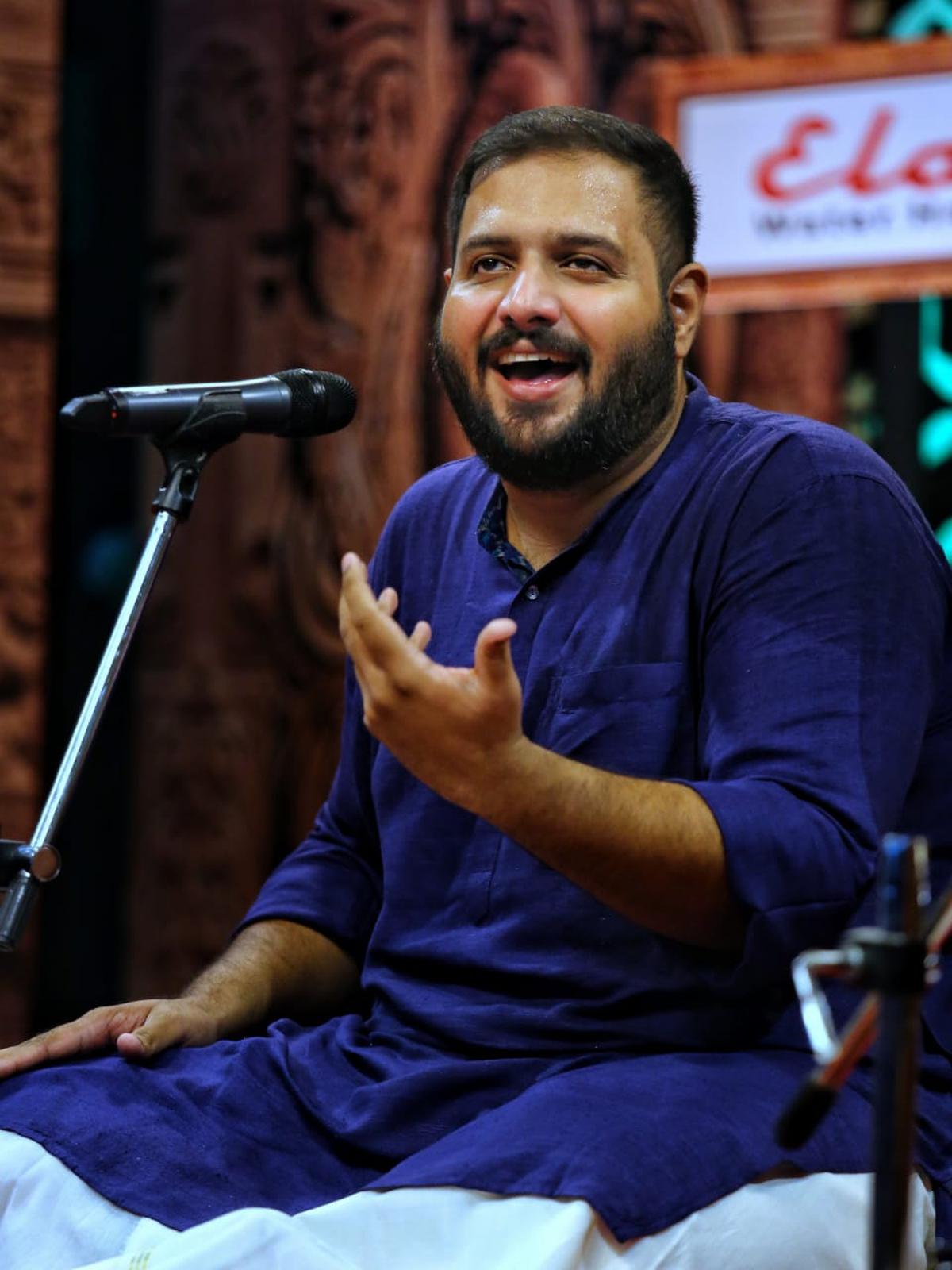
Vignesh Ishwar.
| Photo Credit:
The Hindu Archives
Beginning with a bright Sourashtram, Vignesh Ishwar sang ‘Adhuvum Solluvaal’ in a soothing kalapramanam that set the tone for the upcoming sections. Vignesh subsequently opted for the most elaborate Sahana padam ‘Moratopu’. This was a perfect choice for Vignesh, who has a powerful voice. Quite influenced by his guru T.M. Krishna when it comes to aesthetics, his usage of embellishments while singing padams and javalis significantly aided him to deliver pleasing results.
Multiple versions to a song
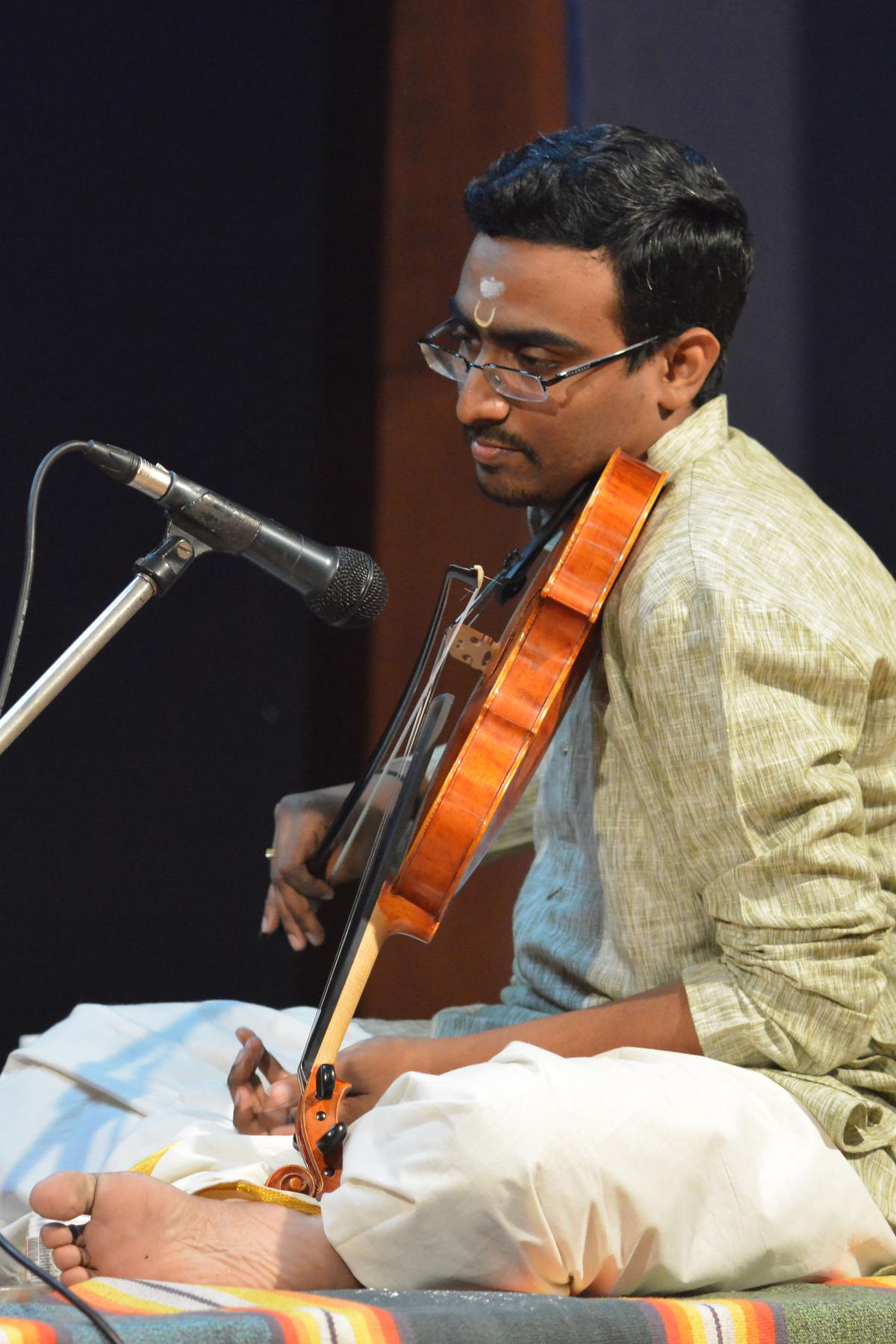
L. Ramakrishnan.
| Photo Credit:
KRISHNAN V.V.
An interesting phenomenon that was prevalent in the Dhanammal family was that each member customised and tweaked certain padams and javalis according to their unique requirements. As a result, multiple versions of the same song existed within the family. What is not spoken often is the prevalence of instrumental versions too — after all Dhanam was a vainika, T. Abiramasundari, a violinist, and T. Viswanathan, flautist. While these renditions were designed to closely resemble the vocal versions to facilitate singing while playing instruments, it is important to specifically honour these vaadhya traditions. With this background, one must appreciate L. Ramakrishnan for presenting two evergreen padams ‘padhari varugudhu’ and ‘mosa jesene’. While he utilised the Kambhoji piece to fully explore the subtleties of the raga in a deep yet breezy fashion, his Sindhubhairavi instantly teleported listeners to the bygone days of T. Balasaraswati, who used to sing the javali on stage during performances, exchanging moving musical moments with T. Viswanathan. Ramakrishnan’s support to the vocalists was valuable that day, as he is a violinist who asserts his presence with restraint and poise.
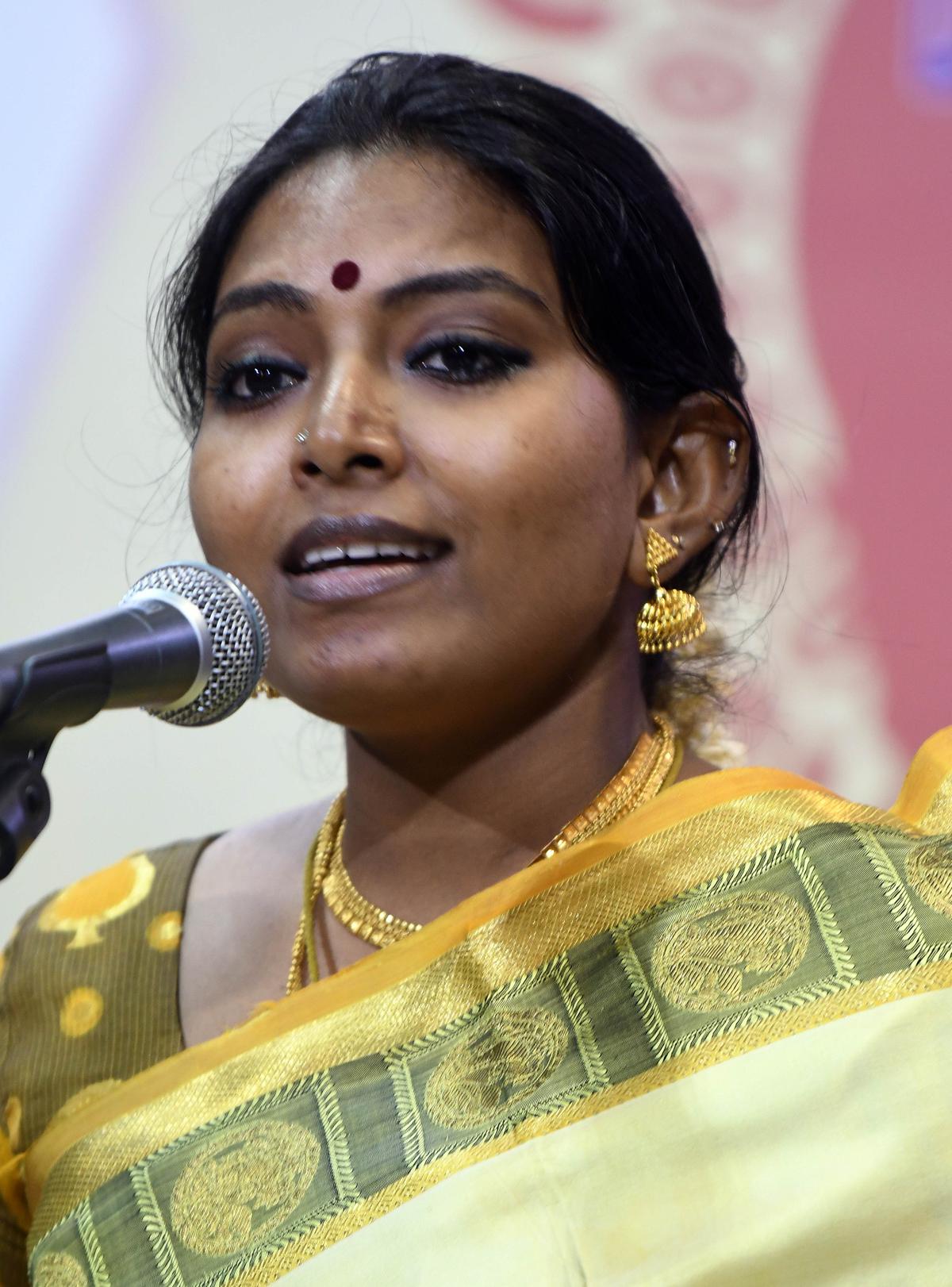
Brinda Manickavasakan.
| Photo Credit:
PICHUMANI K
Analysing the source of these compositions proved to be fascinating as the musicians came from different schools and, over the years, added these songs to their repertoire. For instance, Brindha Manickavasakan, who represented the Musiri bani learnt some of the compositions from veteran vocalist Suguna Varadachari, who acquired some songs directly from Balasaraswati’s mother Jayammal.
Rendered with finesse
Brindha rendered ‘Yaar poi solluvar’ in Thodi and ‘Ososi’ in Mukhari, weighty padams that require technical finesse. One must acknowledge that singing padams at the end of the concert proved to be a blessing for vocalists as their voice was quite conditioned by the time they rendered these difficult pieces.
Graceful rendition
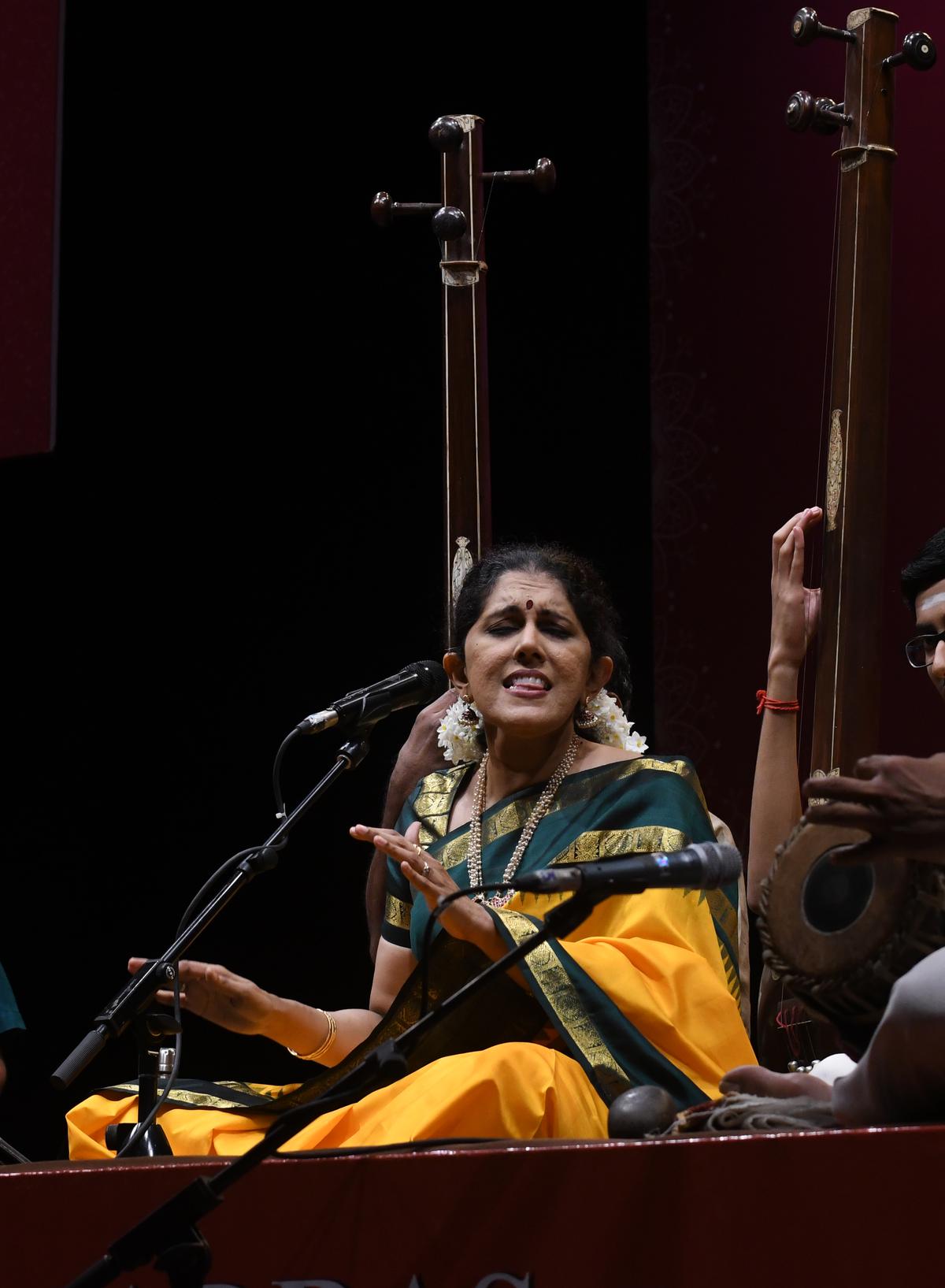
Amritha Murali
| Photo Credit:
KRISHNAN VV
Amritha Murali, rendered two padams – ‘Yaarukagilum’ in Begada and the lesser-heard ‘Neyyamuna’ in Ghanta. Slowly and melodiously, she unfurled every line in the Begada padam . Ghanta surely requires concentration and mastery as the raga is immensely phrase-oriented. S. Sowmya once said in a lecture that the raga carries the shades of Thodi, Bhairavi, Dhanyasi/Asaveri, Kalyani and even Punnagavarali at times. Traditionally begun at the anupallavi like many other padams, the most poignant section of this Kshetrayya composition is the pallavi itself ‘Ayyayyo marapayana’. T. Brinda’s version is perhaps the only one in circulation. Ramakrishnan made the presentation fulfilling as he tinted the curves of this rare raga quite gracefully.
The rare Dhanyasi padam
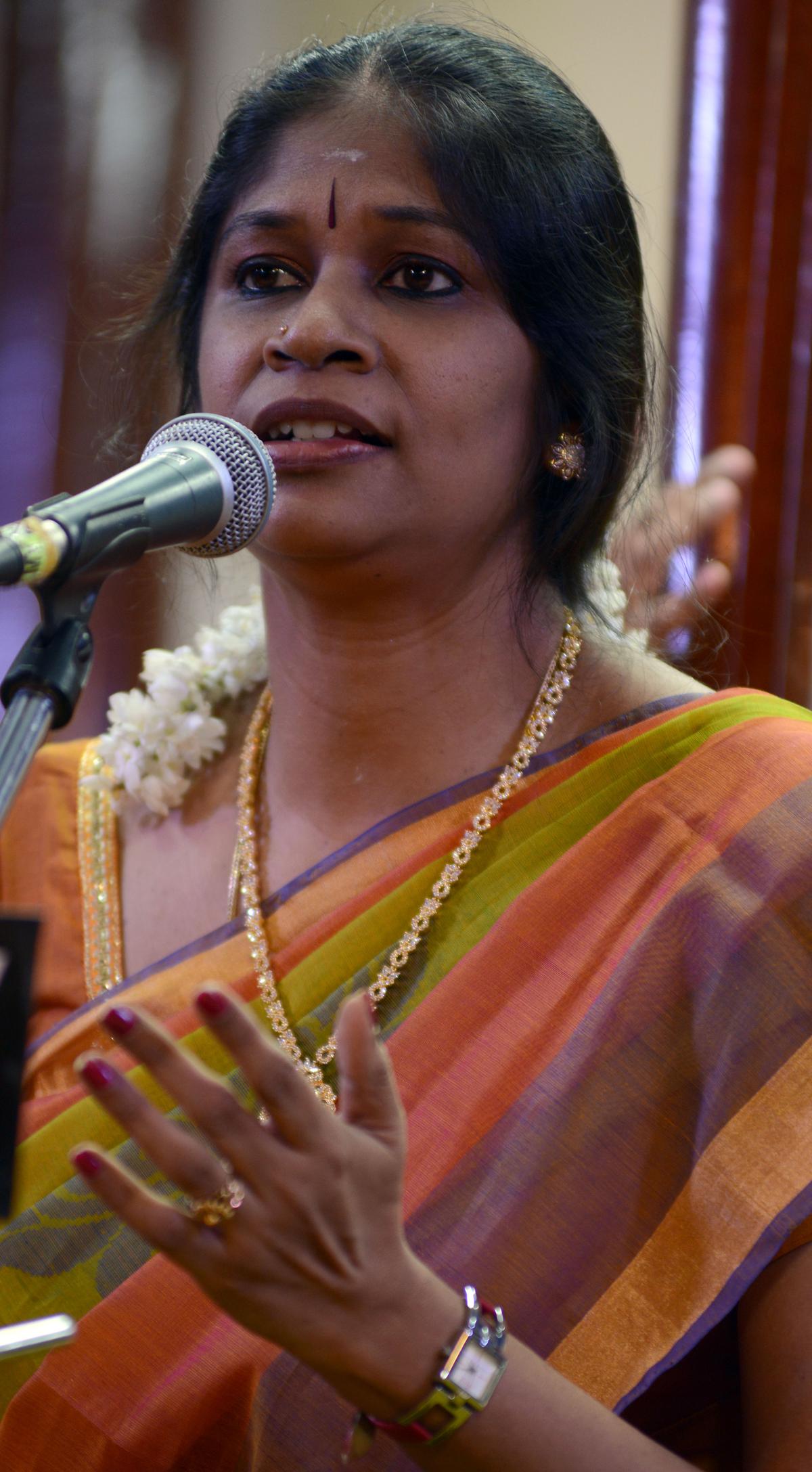
Nandita Ravi.
| Photo Credit:
K.V. SRINIVASAN
Nanditha Ravi rendered the padam ‘Ittanai thulambaramai’ in Dhanyasi and the Kshetrayya padam ‘Kuvalayakshiro’ in Gowlipantu. Being a vocalist, who learnt from her mother, the doyenne Rama Ravi, Nanditha has the responsibility of carrying forward the legacy of several great artistes from the Dhanammal family who were her mother’s gurus. The demanding Dhanyasi padam by Muthu Thandavar, which is critical of the heroine, has many fascinating Tamil words that are unheard today. Apart from Brinda’s version, Salem Godavari is probably the only other singer who recorded her version of this rare composition for a gramophone company more than 110 years ago. The padam ‘Kuvalayakshiro’ is yet another gem from the treasure trove of the Dhanammal family. Nanditha demonstrated superior breath control is required to sustain the notes in this composition, which bewitch listeners through its tasteful usage of the prati madhyamam.
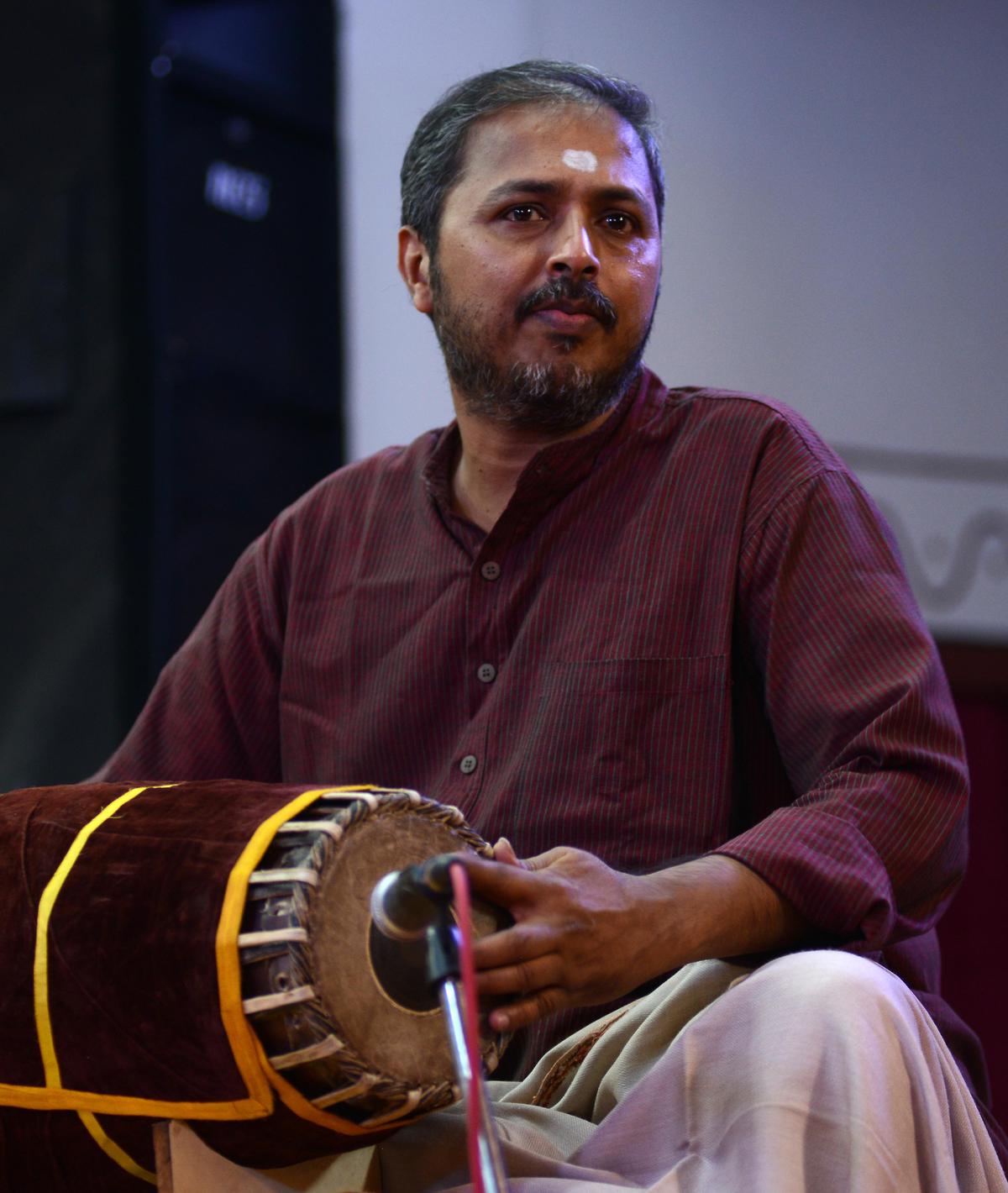
Arun Prakash.
| Photo Credit:
K.V. SRINIVASAN
Thoughtfully curated
Thoughtfully curated, each artiste chose pieces that brought out the best in them. However, it requires specialised knowledge to play mridangam for padams and javalis. In this context, the contribution of senior vidwan K. Arunprakash needs to be emphasised. Describing his playing as ‘unobtrusive’ is an understatement. The way he rhythmically enhanced specific lines in each song, starting from the intricately long ‘Ooraar’ in ‘Ittanai’, the progressing sangatis in the pallavi of ‘Yaarukagilum’ and the histrionic ‘Ayyayyo’ in Ghanta was inspiring. Arunprakash revealed the significance of silence at appropriate places like ‘Anname’ in ‘Yaar poi’, simultaneously showcasing the art of playing vibrantly for javalis that set off swiftly in the mel sthayi in their anupallavis. His technique in playing these compositions reminds one of mridangam legends Coimbatore Ramaswamy Pillai and T. Ranganathan, who were renowned for their padam-playing skills.
A well-charged Bhairavi
In the second half, each musician presented one javali. Vignesh Ishwar, with his commanding presence quite appropriately chose ‘Elaraadayane kaamini’, which begins at the upper gandharam with Bhairavi raga asserting itself with some of its characteristic phrases. Brindha’s Surutti (‘Mariyada teliyakane’) was energetic and radiant. Her equation with Ramakrishnan and Arunprakash was warm during this piece and the mutual camaraderie was infectious.
One of the most intriguing sections in this event were the duet performances. Nanditha and Brindha jointly rendered the iconic Atana piece, ‘Thiruvotriyur thyagarajan’. Although it was inherited from the Dhanammal family by their respective gurus, there were subtle differences in their renditions as each family member rendered them in their own way. Nonetheless, both singers worked together to set aside these minor differences and presented the piece with elan.
A masterclass for music students
It is noteworthy that YouTube channels like Brinda Mukthi and Vaak have made available different versions of particular songs to highlight the diversity in vazhi within the Dhanammal family. The event ended with ‘Janaro’ rendered by Amritha, Vignesh and Ramakrishnan. The pleasing collaboration among these artistes left listeners wanting more. It would not be an exaggeration to state that the way Ramakrishnan and Arunprakash played for this rare event was a masterclass for students of music.
Although padams and javalis were once the sole property of the Dhanammal family (and many other hereditary musical families), several musicians had a desire to learn and present these pieces . Due to the efforts of the Dhanammal family members and other leading musicians, these pieces were taught to many eager music students. These compositions, which were once discarded and, subsequently branded ‘slow and boring’, have found their way back into the performance circuit because of the interest shown by rasikas.




